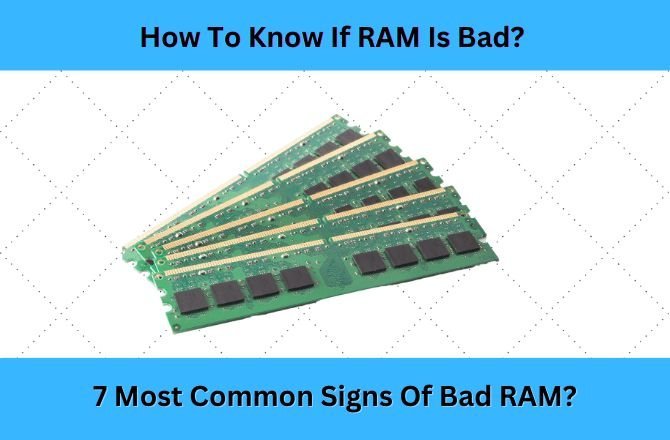Identifying whether your RAM (Random Access Memory) is malfunctioning or faulty is essential when troubleshooting system issues like crashes, freezes, or unexpected restarts. Determining if RAM is the culprit requires careful assessment. Here’s a comprehensive guide on how to tell if your RAM is bad:
Check System Errors
- Frequent system crashes or the infamous Blue Screen of Death (BSOD) are often indicative of RAM issues. Take note of any error messages or codes displayed during system crashes.
Run Memory Diagnostics
- Most operating systems, like Windows, have built-in memory diagnostic tools. On Windows, you can access the Memory Diagnostic Tool by searching for “Windows Memory Diagnostic” in the Start menu. This tool performs a comprehensive test to identify potential RAM issues.
Use Third-Party Diagnostic Tools
- Several third-party software tools, like MemTest86 or MemTest86+, can thoroughly test your RAM. Create a bootable USB drive or CD/DVD with these tools and boot your system from it to perform extensive RAM tests.
Physical Inspection
- Visually inspect your RAM sticks for physical damage like corrosion, bent pins, or signs of overheating. Faulty RAM might show visible damage or irregularities.
Reseat RAM Modules
- Turn off your computer, discharge any static electricity, and carefully reseat the RAM modules. Improperly seated RAM can cause connection issues leading to malfunctions.
Check Event Logs
- Review the system logs for memory-related errors or warnings. In Windows, access the Event Viewer to check for Memory or System errors that might indicate RAM problems.
Perform Stress Tests
- Utilize stress-testing software like Prime95 or AIDA64 to put your system under heavy load. These tests can reveal instability caused by faulty RAM.
Run Single Stick Tests
- If you have multiple RAM sticks installed, try removing one stick at a time and test the system’s stability with each individual stick. This process can help isolate a faulty RAM module.
Test Different RAM Slots
- If your motherboard has multiple RAM slots, try switching the RAM sticks to different slots. Sometimes, a faulty slot can cause RAM-related issues.
Consider Known Good RAM
- If possible, test your system with known good RAM modules. If the issues disappear with the new RAM, it could indicate that your original RAM is faulty.
Final Thought:
Identifying faulty RAM involves a combination of diagnostic tools, visual inspection, and systematic testing procedures. RAM issues can manifest in various ways, from system crashes to erratic behavior, and troubleshooting them requires patience and careful examination.
By employing diagnostic software, physical inspection, and systematic testing methods, you can determine if your RAM is causing the issues, allowing for targeted solutions such as replacement or repair, ensuring a stable and reliable computing experience.
